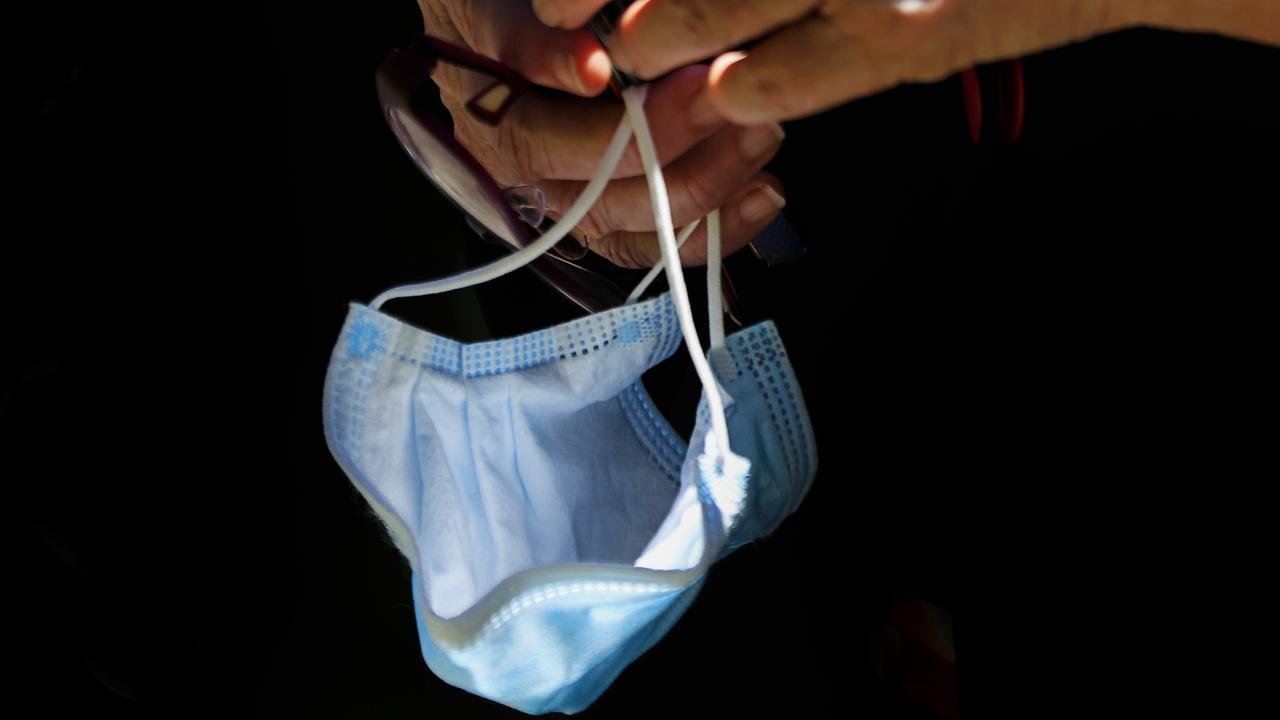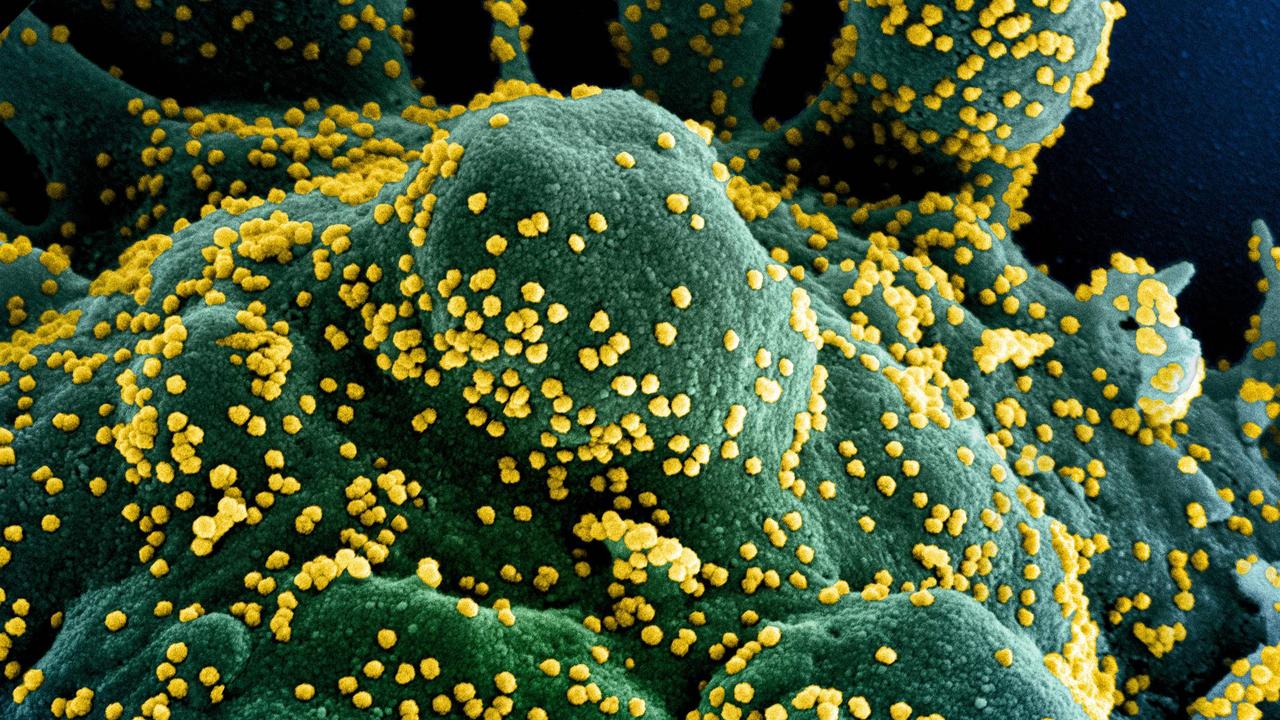Experts suggest Omicron subvariant seven times more transmissible than original Covid-19
The new Omicron subvariant tipped to become dominant in Australia could be seven times more transmissible than the original form of Covid-19.
The new Omicron subvariant could be more than seven times more transmissible than the original form of Covid-19, some experts suggest, amid warnings it could soon become the dominant strain in Australia.
Known as BA.2, scientists first discovered the Omicron variant in November – growing more common across the world in the months since, including, now, in NSW and Victoria, with the reproduction rate (the average number of people a case infects) now pushing above one.
The subvariant is “generally estimated to be 30 to 40 per cent more infectious than BA.1”, chair of epidemiology at Deakin University, Catherine Bennett, told news.com.au.
“It is believed to be four to five times more infectious than Delta, which in turn was at least twice as infectious as the original variants,” Professor Bennett said.
“It’s hard to directly compare as we now have acquired immunity and that helps keep the effective reproductive number lower.”
University of NSW School of Public Health applied mathmetician, Associate Professor James Wood, has similarly estimated it’s between 25 and 30 per cent easier to catch the BA.2 subvariant than it was to contract its predecessor, BA.1.


“It first became clear in Denmark it was more transmissible than Omicron,” Dr Wood told the ABC. “The dominant variant, for about a month, has been BA.2. We’ve started to see that pattern in a number of other countries like the UK and now we’re getting data that’s confirming that’s the case in Australia, in particular NSW.
“We think by the end of the month it will [account for more than] 90 per cent of the cases [in NSW].”
Epidemiologists overseas in recent weeks have posited that BA.2 may be as transmissible as measles – which is regarded as one of the world’s most contagious diseases.
Speaking to The Sydney Morning Herald, Australian National University infectious diseases expert, Associate Professor Sanjaya Senanayake, said BA.2 was “definitely up there” with measles in terms of transmissibility, but warned against overstating the significance of this.
“Around one in 20 people with measles will be hospitalised, but this figure is much lower for people with Covid-19,” he said.
Australia is also in a better position to cope with an influx of BA.2 cases than it was with the first Omicron wave over in December and January, Dr Senanayake said.
“The important thing is we have a higher number of boosted people,” he explained.
“If we can get as many people boosted as possible, we know that lowers your risk of hospitalisation.”
Viruses generally become more transmissible and less severe as they mutate – with health authorities pointing out in recent weeks that there is “no real evidence” that BA.2 is a more severe infection than BA.1.
“Denmark hasn’t experienced a surge in deaths … I’d say it’s similar,” Dr Wood said.
“We can expect a rise in hospitalisations and intensive care …[but] we have progress in booster coverage – that’s the sort of thing that will help keep severe disease down.”
Prof Bennett said it was “unlikely” Australia will “see a peak as steep as BA.1, as booster rates are higher now and that reduces symptomatic infection risk by more than 50 per cent for the first few months”.
“Those where BA.1 spread the fastest – those in their 20s – have seen the highest infection rates, and therefore have that additional protection from BA.2,” she added.
“[So] reinfections are not common, and mainly occur in young unvaccinated people according to Danish data.”

Prof Bennett said the changing weather conditions over the coming months and particularly the resurgence of influenza could be “a worry as we have seen so little and therefore our natural immunity will have waned over the last two years”.
“With colds and flu on the rise in winter, it will be harder to identify Covid just on appearance of symptoms with this overlap with other winter viruses,” she explained.
“Winter is always a concern as we move indoors and humidity helps viruses spread.”
As cases steadily mount again in NSW, Health Minister Brad Hazzard on Monday warned that “the pandemic has not gone away”, with the rising numbers a result of key restrictions being eased at the beginning of March and underpinned by the new subvariant.
“We are having forecasts [that] we could see double the number of Covid cases in the next four to six weeks,” Mr Hazzard told the Today show.
“We are still seeing people die from what is actually happening in Australia. We are seeing numbers increase, obviously in Western Australia as well, quite dramatically, and the forecast is it may actually increase here.”

Asked by host Ally Langdon whether the state could likely see the return of restrictions – which NSW Health has reportedly called for – Mr Hazzard said that “basic measures” like mask wearing “are still very important”, but didn’t confirm whether measures could be reinstated.
“This is a timely reminder that the community, all of us, have a responsibility to make decisions for our own environment as to what we think is appropriate,” he said.
“Certainly [chief health officer Dr Kerry Chant] and the health team here in NSW have said many, many times, I have said, when you’re in close proximity with others it still makes sense to wear a mask … Wash your hands, don’t come to work if you’ve got any symptoms at all.”
Prof Bennett said there wasn’t yet a need to reintroduce infection controls.
“The more vulnerable might also have a second booster available and that will help them get through winter safely,” she said.
“But [it’s] wise to keep masks on indoors in shared public spaces, alongside public transport and healthcare and, if enough of us do that, we won’t need rules put in place as protecting ourselves will also help keep a lid on transmission overall.”






